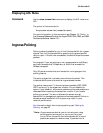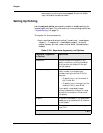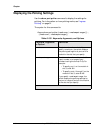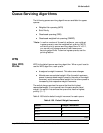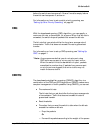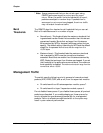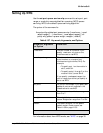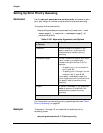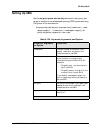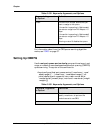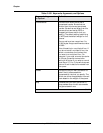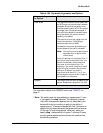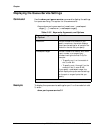
Avaya P550R, P580, P880, and P882 Multiservice Switch User Guide, v5.3.1 -39
80-Series QoS
Setting Up WFQ
Use the set port queue service wfq command to set a port, port
range, or module to use weighted fair queueing (WFQ) queue
servicing. WFQ is the default queue-servicing algorithm.
The syntax of the command is:
Avaya(configure)#set port queue service {{<mod-num> | <mod-
swport-range>} [...,{<mod-num> | <mod-swport-range>}] | all-
ports} wfq {queue <queue> weight <weight> | default}
For information about how WFQ works, see “WFQ” on page 35.
Table 6-157. Keywords, Arguments, and Options
Keyword, Argument
or Option
Definition
<mod-num> The slot number of a module. If you
specify <mod-num>, all ports on the
module are set to use WFQ.
<mod-swport-range> The slot number of a module, and, either
a port number, or a range of port
numbers having the format Px-Py. For
example:
• To specify port 1 on the module in
slot 3, enter 3/1.
• To specify ports 1 through 5 on the
module in slot 3, enter 3/1-5.
If you specify <mod-swport-range>, the
port or range of ports that you specify is
set to use WFQ.
all-ports All ports in the chassis. If you specify all-
ports, all ports on all modules in the
chassis are set to use WQF.
<queue> The queue number, which can range
from 0 to 7.
<weight> The weight that you want to assign to the
queue. Weights can range from 1 to 254.
default The default weights. For the specific
default weight of each queue, see
Table 6-156 on page 21-35.



